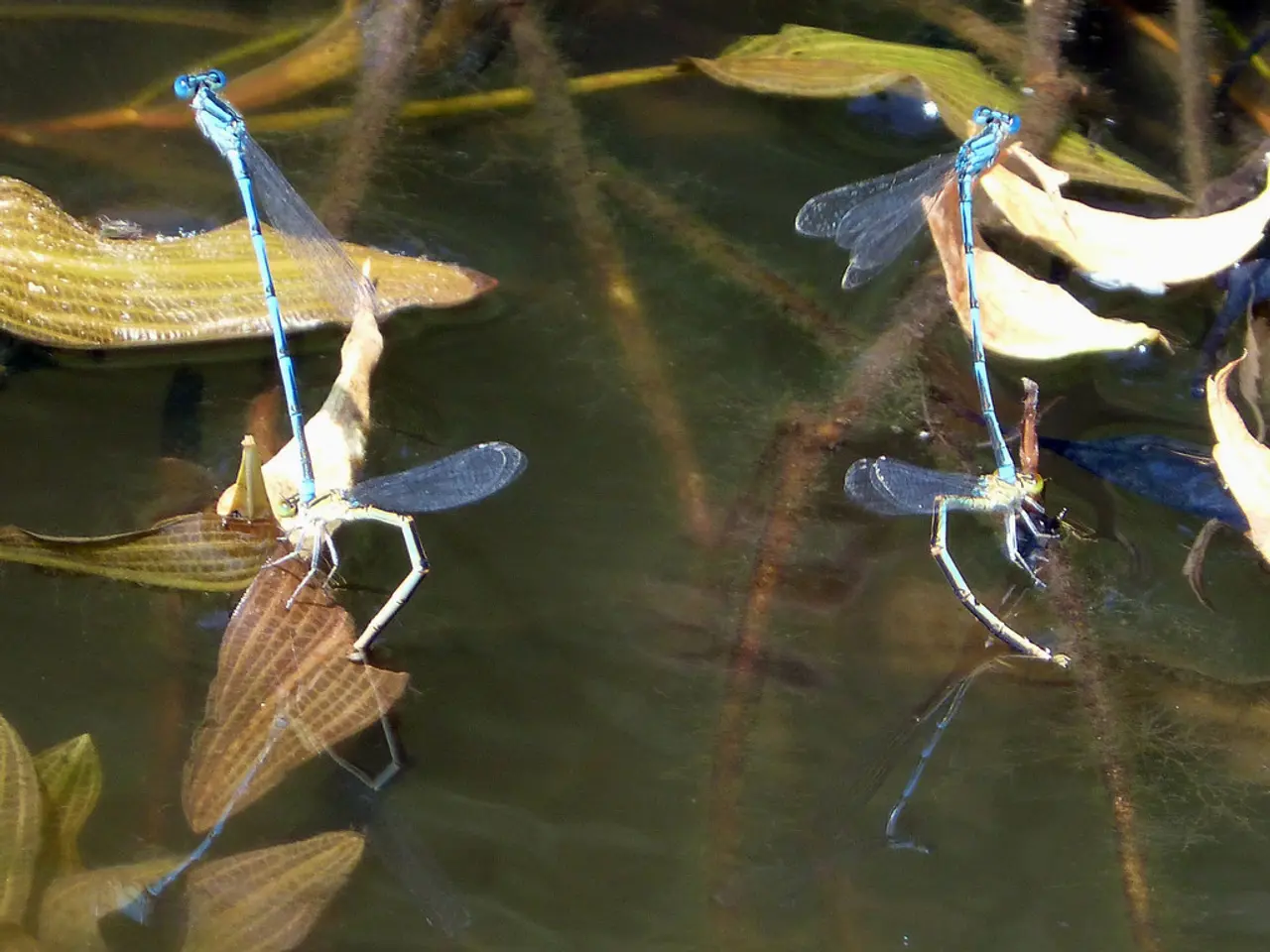Creating a Backyard Wildlife Sanctuary: A Guide to Constructing a Pond to Attract and Assist Your Local Fauna
Creating a Wildlife-Friendly Pond: A Guide for Backyard Nature Lovers
A wildlife-friendly pond can transform your backyard into a thriving oasis for local fauna. Here's a step-by-step guide to help you create a perfect habitat for amphibians, insects, birds, and more.
Edging Ideas
To make your pond welcoming for wildlife, consider using gradually sloping stones or logs that extend both above and below the water's surface. These create safe entry and basking spots for amphibians, reptiles, and insects. Incorporate natural landing zones with varied textures (rough for grip, smooth angled slabs) at multiple pond points, especially near sheltered garden areas. This allows wildlife quick access and cover. Surround the pond with a small rockery, mulch with woodchip, and plant beneficial herbs and flowers nearby for added habitat diversity and feeding zones.
Plant Suggestions
Include marginal and moisture-loving plants such as cattails, sedge grasses, pickerel rushes, irises, and joe pye weed. These plants provide food, cover, nesting, and breeding sites. Use floating plants near edges to offer resting spots for insects and help wildlife move safely around the pond. Consider shallow marshy zones to attract and support various species.
Maintenance Tips
Regularly remove debris (leaves, twigs) with a pond net to prevent nutrient buildup and water quality decline. Introduce or encourage beneficial wildlife like frogs, newts, dragonflies, damselflies, and pond snails, which help control pests and maintain ecological balance. Avoid chemical treatments like algaecides or herbicides, which can harm beneficial organisms. Thin out excessive plant growth and remove dead foliage or blanket weed to prevent overgrowth in small ponds. If using a container or preformed pond, sinking it partially into the ground helps moderate water temperature and creates a more stable habitat.
Choosing the Right Pond
For small spaces, a container pond or repurposed waterproof basin can work well, though it attracts fewer species than natural ponds. Avoid fish if promoting wildlife diversity, as fish often consume amphibians and invertebrates.
Tips for Attracting More Wildlife
Include at least one flat slab, angled down to the water surface, to allow amphibians to enter and exit. Adding rock outcroppings or half-submerged logs and branches to the pond edges can attract turtles and other wildlife. The best type of pond for attracting wildlife is an excavated area, 3 feet by 6 feet, with a curved, irregular shape.
Maintaining Your Pond
Cleaning out the pond every year helps maintain it for many years to come. Controlling mosquito populations is important, and a cheap and fool-proof way to do so is to throw in a mosquito dunk every month.
Benefits of a Wildlife Pond
A wildlife pond is beneficial for local wildlife and can reduce stress and anxiety. Building a small pond can help native animals. Lowe's has an affordable pond liner system, and Aquascape offers a DIY ecosystem pond kit with a filtration system on Amazon.
Expert Advice
Teo Spengler, a master gardener and docent at the San Francisco Botanical Garden, recommends adding aquatic plants and floating plants to the pond, while marginal plants are planted on shelves within the pond and situated around its edges. The pond should blend in well with the natural landscape of the land.
Conclusion
With these tips, you can create a thriving, wildlife-friendly pond that supports amphibians, insects, birds, and more while maintaining water clarity and ecological health. Why not start your backyard wildlife oasis today?
By incorporating a variety of plant species and creating safe entry points, you can transform your wildlife-friendly pond into a diverse and sustainable living space. Choose from marginals like cattails, sedge grasses, or pickerel rushes, and integrate home-and-garden elements such as logs and stones to attract a range of wildlife.




